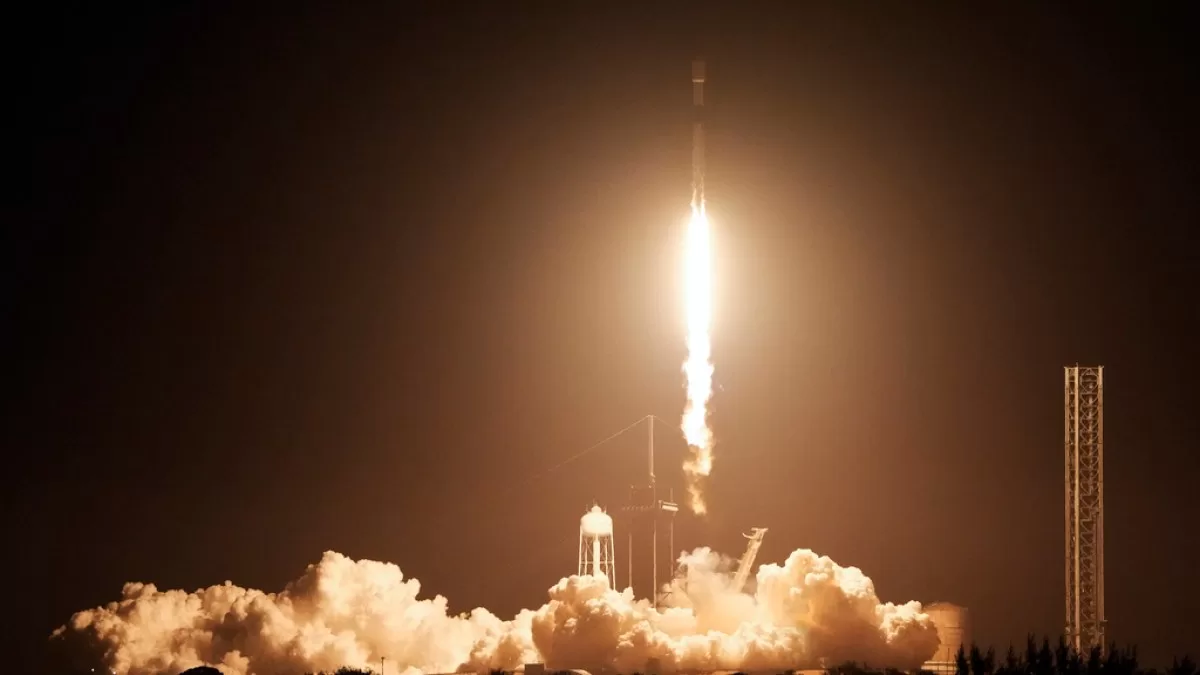NASA, the main sponsor with experiments on board, hopes to jumpstart lunar economy ahead of astronaut missions.
A lunar lander has taken off for the moon in a bid to make the first United States landing since the Apollo missions more than half a century ago and the first achieved by a privately owned spacecraft.
A Falcon 9 rocket flown by Elon Musk’s SpaceX lifted off after 1am (06:00 GMT) on Thursday from NASA’s Kennedy Space Center in Cape Canaveral, Florida, launching a moon lander made by Intuitive Machines towards its destination 370,000km (230,000 miles) away.
If all goes well, a touchdown attempt is expected on February 22 after a day in lunar orbit.
Intuitive Machines, a Houston-based aerospace company, launched mission “IM-1” a month after a rival lunar lander made by Astrobotic Technology crashed back to Earth, burning up over the Pacific 10 days after takeoff.
“There have been a lot of sleepless nights getting ready for this,” said Steve Altemus, co-founder and chief executive of Intuitive Machines.
The lander resembled a six-pointed star jewel – each point a leg – as it successfully separated from the upper stage and drifted off into the black void.
Intuitive Machines named its lander after Homer’s hero in The Odyssey.
“Godspeed, Odysseus. Now let’s go make history,” said Trent Martin, vice president of space systems at Intuitive Machines.
NASA science is nestled aboard @Int_Machines’s Nova-C lander, set to launch to the Moon on a @SpaceX Falcon 9 rocket. Landing near the Malapert A crater will help us learn more about the lunar South Pole, a big step in our #Artemis campaign. https://t.co/oT7m0a8PwX
— NASA (@NASA) February 15, 2024
NASA aims
Only five countries – the US, Russia, China, India and Japan – have scored a lunar landing and no private business has yet done so.
The US is the only country to have sent astronauts to the moon with Apollo 17’s Gene Cernan and Harrison Schmitt closing out the programme in December 1972. That was it for US moon landings until Astrobotic’s short-lived attempt last month.
NASA, the main sponsor with experiments on board, is hoping to jumpstart the lunar economy ahead of astronaut missions.
It hopes to operate near the moon’s south pole where Intuitive Machines is aiming for its 14-foot (4.3-m) tall, six-legged lander to touch down – a region full of treacherous craters and cliffs, yet potentially rich with frozen water.
This area is where NASA plans to land astronauts later this decade. The space agency said its six navigation and tech experiments on the lander can help smooth the way.
NASA is paying Intuitive Machines $118m to get its latest set of experiments to the moon.
The company also drummed up its own customers, including sculptor Jeff Koons, who is sending up 125-inch (317.5cm) moon figurines in a see-through cube.
The lander is carrying Embry-Riddle Aeronautical University’s EagleCam, which will snap pictures of the lander as they both descend.
The spacecraft is set to cease operations after a week on the surface.
